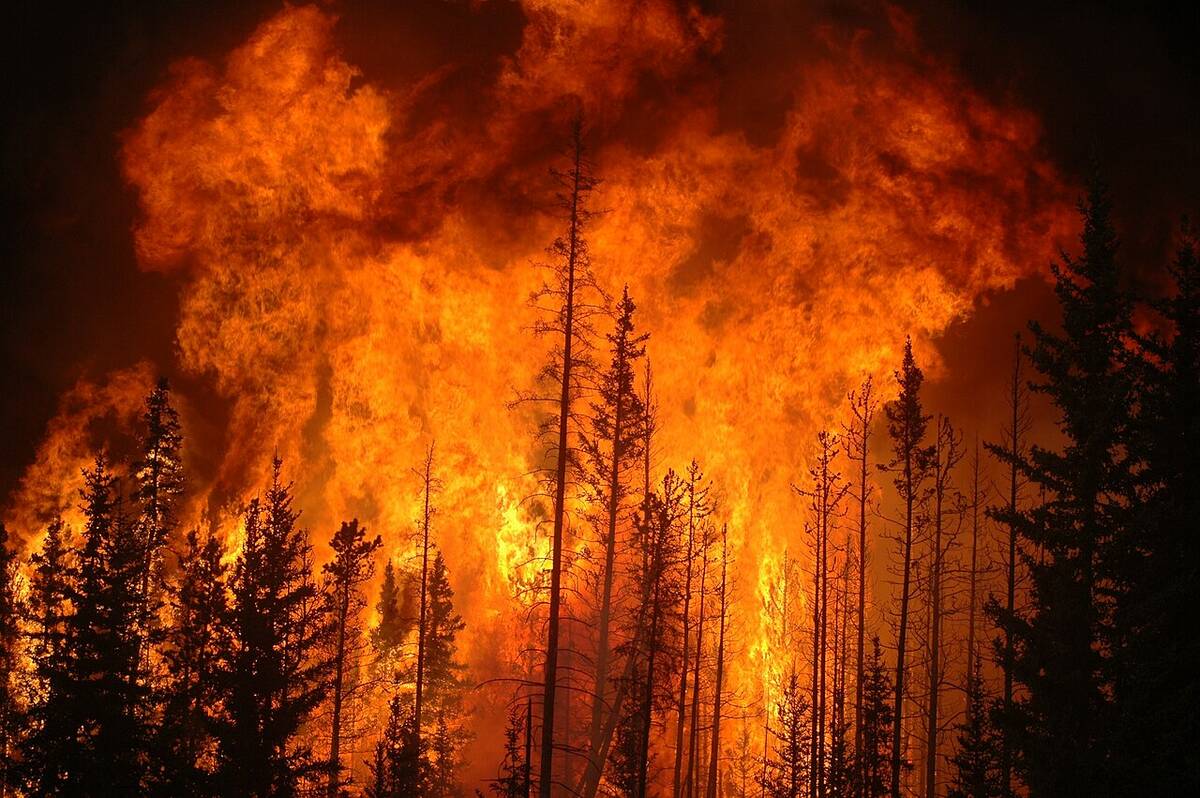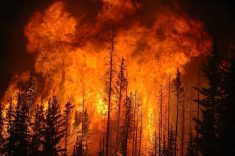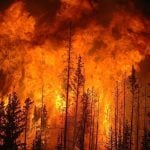As promised in the last issue, we are going to look back at last year’s weather across the Prairies.
I really struggled on how to best get this information across. Should I discuss each month or season, highlighting the high and low points? Should I dig into the numbers? I decided dig into the numbers this year, but that added the issue of how best to get all this data across to you the reader. Should I use a bunch of tables, or would that be just too many numbers?How about turning all that data into graphs? Graphs with all the different stations’ data gets too messy, and they take up a lot of room!
I decide on a compromise. I’ll show some of the data using tables and then consolidate some of the data into a couple of graphs. For the first set of tables, I’ll follow the same format as the monthly weather reviews, but instead of monthly temperatures and precipitation, it’s the yearly amounts.
Read Also

YEAR IN REVIEW: 2025 a year of weather extremes
Wildfires, drought and flash floods, oh my! Looking back at the year’s headline-grabbing events in Canada and around the world.

Looking at the absolute temperatures, Winnipeg was the hot spot across the Prairies in 2024 with a mean yearly temperature of 5.5 Celsius. Calgary followed closely at 5.4 C. Not surprisingly, Peace River was the cold spot, coming in at 2.2 C. While this data is interesting, we need to look at how these temperatures compared to the long-term average.

Looking at this table, we can see Winnipeg’s yearly temperature was well above the long-term average, while Calgary’s was closer to average and more inline with the rest of the reporting stations. According to the data, it was slightly warmer than average across the Prairies with parts of southern Manitoba seeing well above average temperatures. Next up is the yearly precipitation.
Just like with temperatures, Winnipeg ended up in top spot, Calgary came second and Peace River had the least precipitation. Except for Calgary, Manitoba was the wet spot while the least amount of precipitation fell across Saskatchewan and northern Alberta. Let’s look at how these amounts compare to average. For this table I also included the percent of average precipitation.

When comparing to average the picture is a little different. Calgary is now the wet spot at 125 per cent of average. Winnipeg, Brandon, Dauphin, and Saskatoon came in right around average, and Regina had a little below average moisture. The driest region was in the Edmonton and Peace River region.
Looking at yearly temperatures and precipitation amounts is fine to get a general view of the years weather, but to get a true feel for the year you either need to look at these values on a month-by-month basis or look at the weather season by season. For this review I decided to look at the data by seasons. I defined winter as January to March, spring as April and May, Summer as June to August, and Fall as September to November.
As you can see by looking at the yearly data, absolute values are interesting, but looking at the difference from average or the anomalies gives you a better picture. So, for this part I am only going to look at the anomalies. I also thought I would graph the data for those of you who are more visual. To make the graphs easier to read I averaged out all the data for Alberta, Saskatchewan, and Manitoba thus making only three data points per season.

In the first graph, the lines represent seasonal temperature anomalies across the three provinces. From the graph you can see that last winter was well above average across Manitoba, slightly above average in Saskatchewan, and slightly below average in Alberta. Temperatures in the spring were very similar across the Prairies with most locations reporting slightly above average temperatures.
Summer saw temperatures around average across Manitoba and Saskatchewan and Alberta saw slightly warmer than average temperatures. Fall saw a big spike in temperatures across Manitoba and Saskatchewan while Alberta stayed steady at just above average.

The second graph shows the precipitation anomalies by season across the three Prairies provinces. Looking at the winter, Manitoba and Saskatchewan saw below-average precipitation while Alberta was near average thanks mostly to a wet winter in Calgary.
Spring was interesting with Manitoba and Alberta seeing above average precipitation and Saskatchewan coming in near average. Summer was dry in Alberta, near average in Saskatchewan, and bang-on average in Manitoba, which is why you do not see a bar! Fall ended up near average in Manitoba and below average in Saskatchewan and Alberta.
Well hopefully that sums up the weather across the Prairies in 2024, at least from a general overview point of view. In the next issue we’ll look at some of the top weather stories of 2024 from around the world.
















